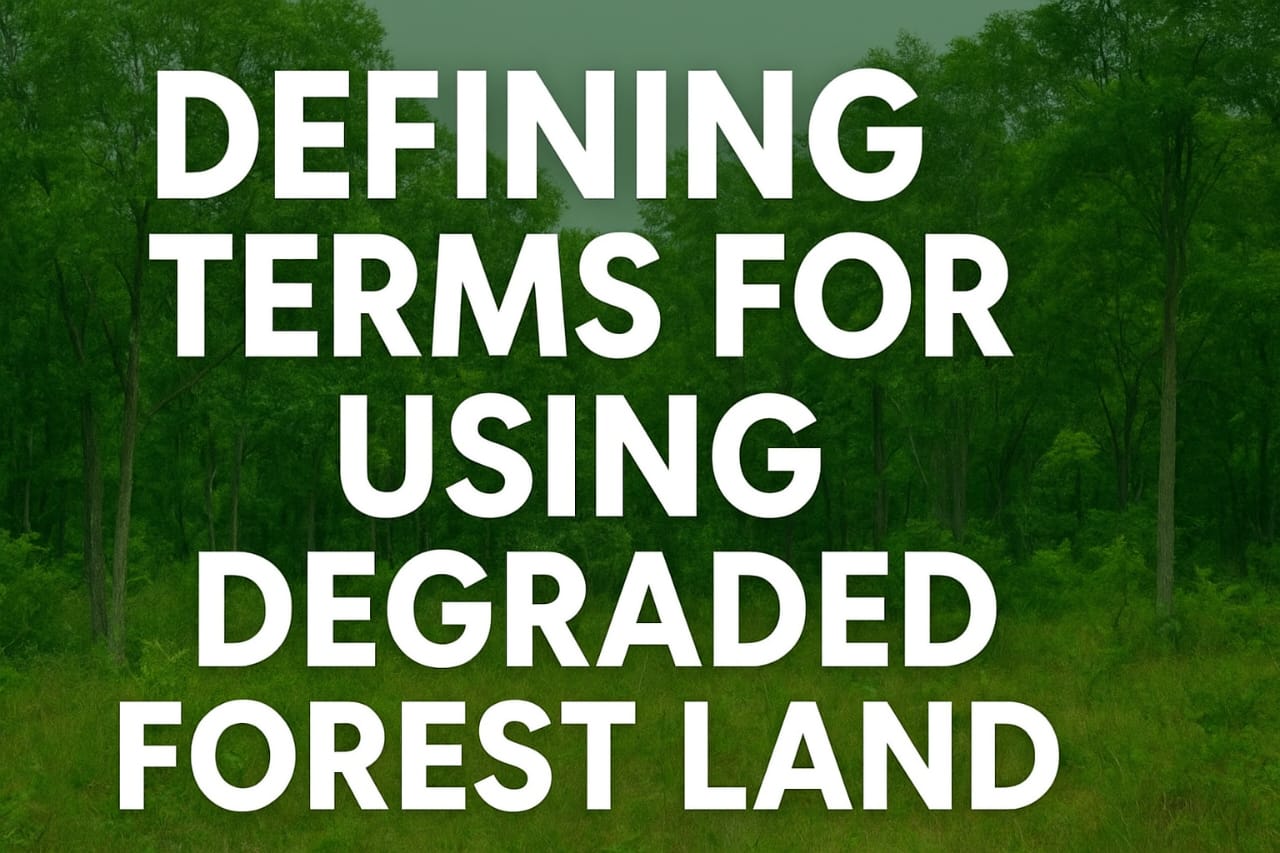
The Union Environment Ministry has asked states and union territories to define clear terms for the use of degraded forest land for compensatory afforestation. This directive has important implications for India’s environmental policy, its climate goals, and the way infrastructure and industrial projects interact with natural resources. By tightening guidelines, the government aims to bring clarity to a process that has often been criticized for its vague standards and inconsistent implementation.
Compensatory afforestation is a system where entities that divert forest land for non-forest purposes must plant trees on an equivalent or larger area of non-forest land. When such land is not available, degraded forest land is considered as a substitute. Until now, the criteria for what counts as degraded forest land were loosely applied. The new rules seek to change that.
According to the ministry’s guidelines, only degraded forest patches that meet specific ecological and administrative conditions will qualify. The land must be at least five hectares in size, should have been under restoration for a minimum of five years, and must have reached a canopy density of at least 40 percent. Afforestation must involve indigenous species suited to the site, which reduces the risks associated with monoculture plantations. The user agency, which is the project proponent responsible for forest diversion, must cumulatively restore at least twenty five hectares of degraded forest land under the Green Credit Programme in order to be eligible.
The new rules also set out administrative safeguards. The land to be exchanged must be recorded as forest in official records, should be under the control of the forest department, and must be free from encumbrances. The user agency will also remain responsible for maintaining the afforested land for ten years. If the agency chooses to claim credits before the full period has passed, it must deposit the necessary funds for the remaining years with the Green Credit administrator. These safeguards are designed to avoid the misuse of degraded forest lands and to ensure long term upkeep of plantations.
Another important aspect of the guidelines is the exchange ratio, which specifies how much restored land is required in return for every unit of forest diverted. For projects connected to critical minerals, captive coal blocks, or atomic energy, the restored land must be twice the area diverted. In certain mining cases, it may be as high as three times. In states where forest cover already exceeds thirty three percent, the ratio is two times, while in others it may go up to four times. These ratios reflect the principle that some types of projects carry a heavier ecological cost and therefore must compensate more.
While these steps mark a positive move toward accountability, experts remain cautious. Ecologists argue that plantations, even when well maintained, do not replicate the biodiversity, soil quality, and ecosystem services of natural forests. Critics warn that over-reliance on degraded land afforestation could create a false sense of compensation and may encourage faster approvals for forest diversion. The long standing Godavarman judgment, which took a wide view of what counts as forest, also poses a legal challenge. Some degraded lands now being earmarked for afforestation were originally brought under protection through this judgment.
Implementation is another major hurdle. Reports have shown that many states underutilize the funds allocated for compensatory afforestation. Between 2019 and 2023, India achieved only about eighty five percent of its afforestation targets under the Compensatory Afforestation Fund Management and Planning Authority. In states like Haryana, less than sixty percent of allocated funds were spent, leaving green cover largely stagnant. Without robust monitoring, local participation, and transparent fund usage, the effectiveness of the new rules may remain limited.
Despite these concerns, the ministry’s initiative reflects an effort to align compensatory afforestation with India’s climate commitments. The country has pledged to reach net zero carbon emissions by 2070 and has committed to creating an additional carbon sink of 2.5 to 3 billion tonnes of CO2 equivalent through expanded forest and tree cover. Defining degraded forest land more rigorously could make afforestation more credible and ecologically meaningful.
The success of these reforms will depend on how strictly the guidelines are enforced and how actively state governments implement them. Transparency, independent audits, and community participation will be vital. The policy could transform degraded patches into healthy ecosystems and make compensatory afforestation a genuine tool for conservation rather than a bureaucratic formality. The challenge lies not only in defining degraded land but in ensuring that restoration translates into real forests that support biodiversity, livelihoods, and the climate goals of the nation.





















